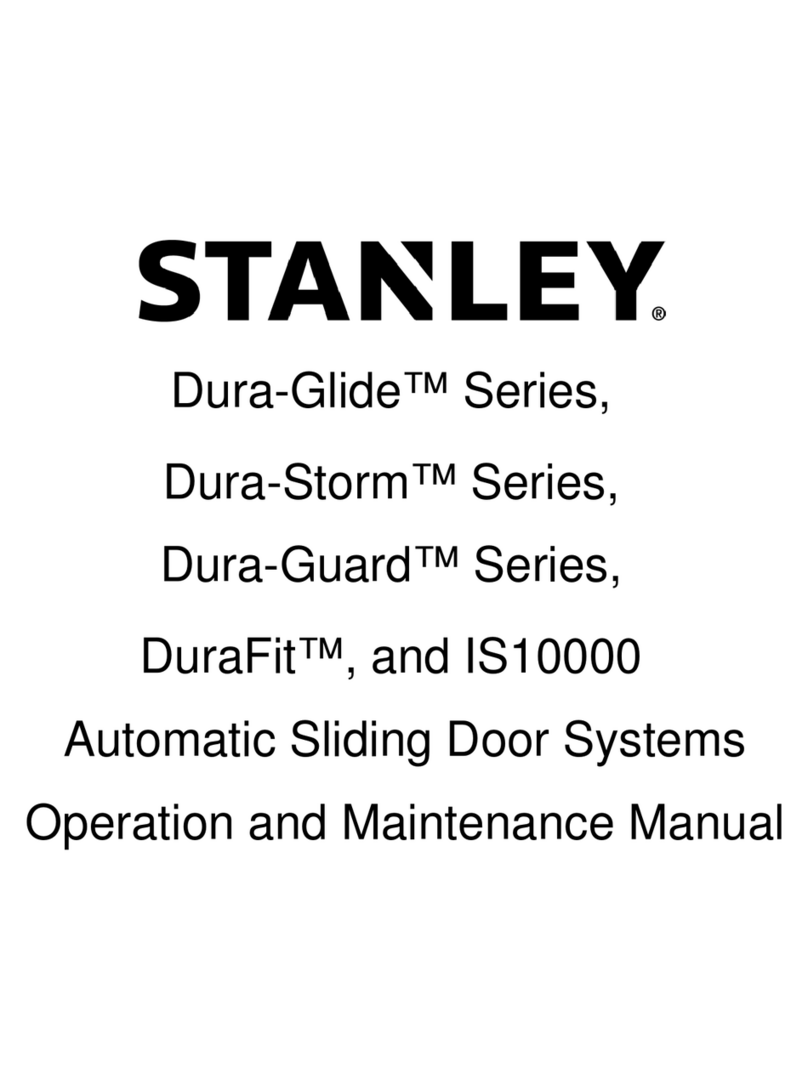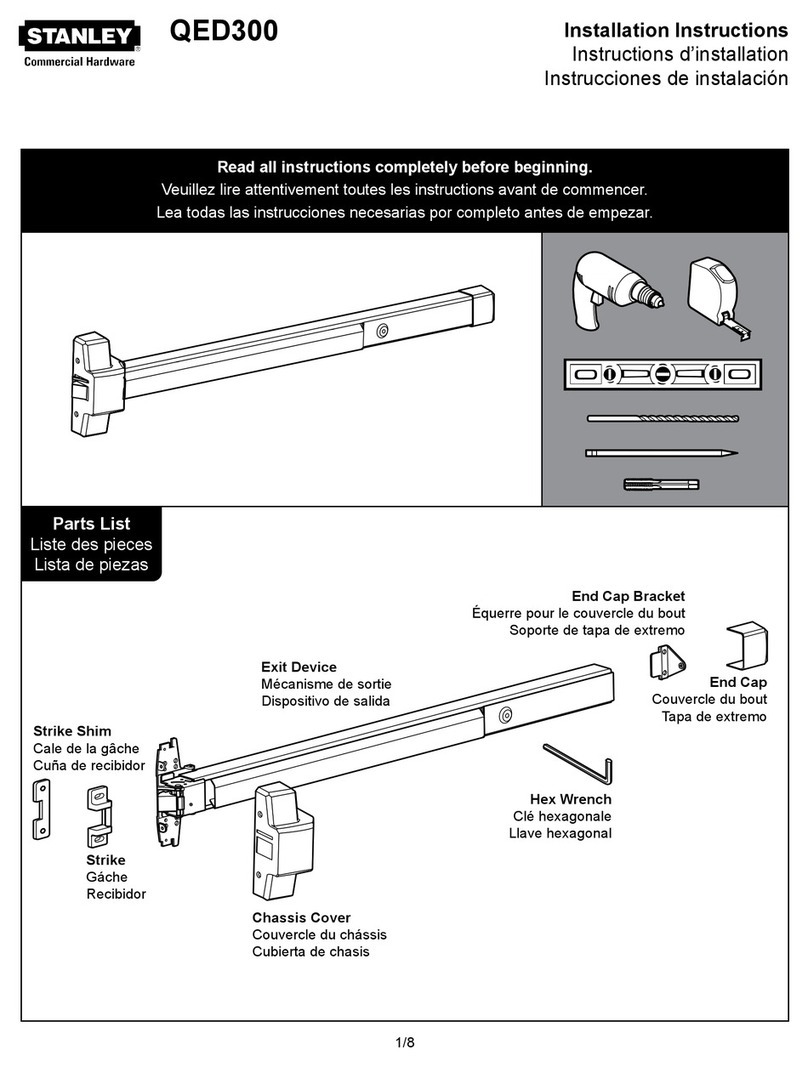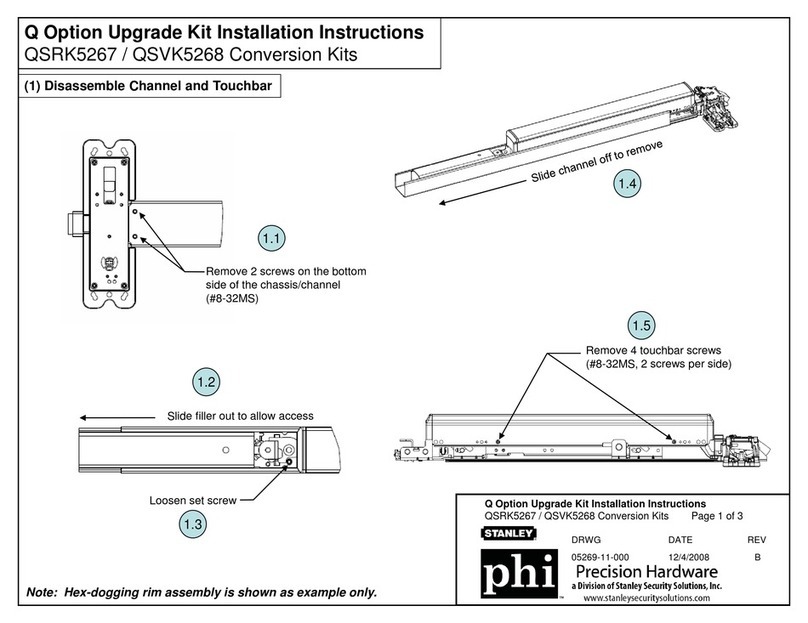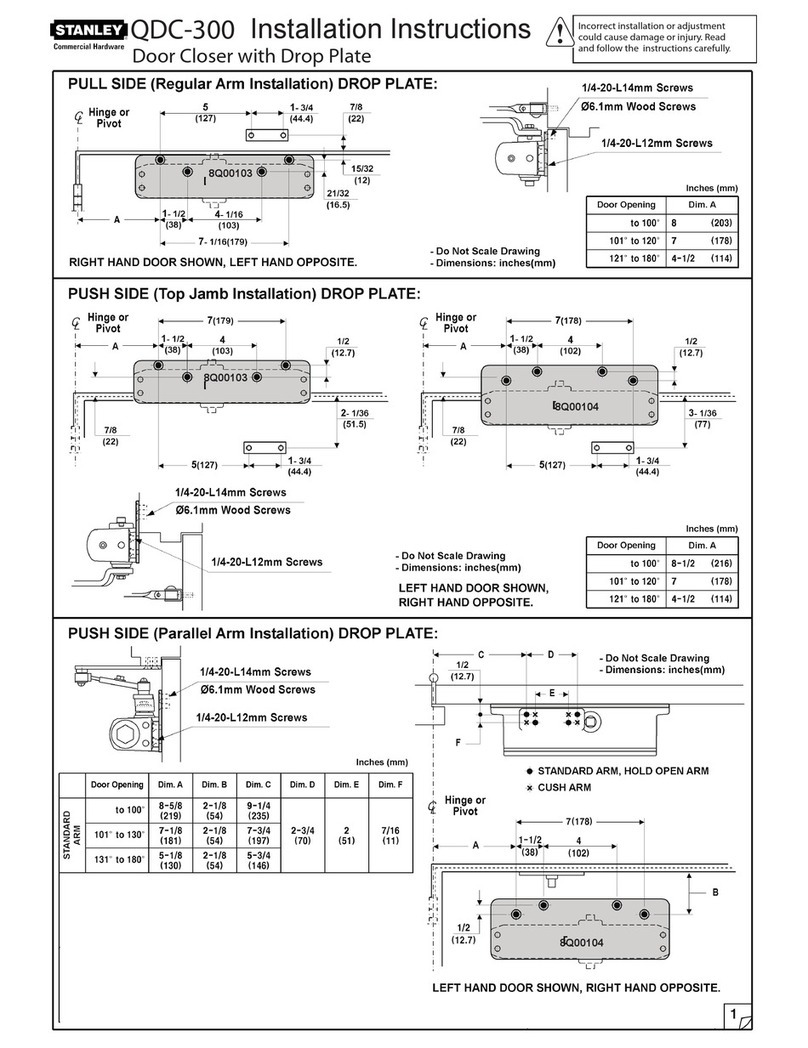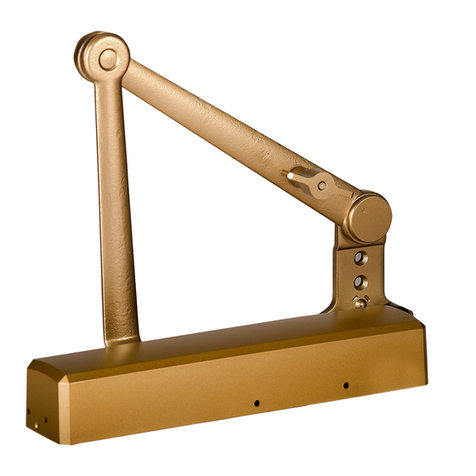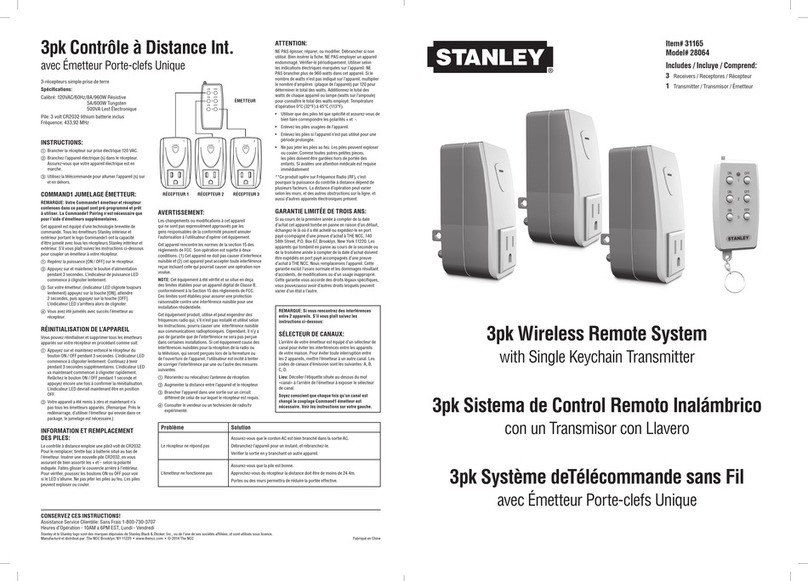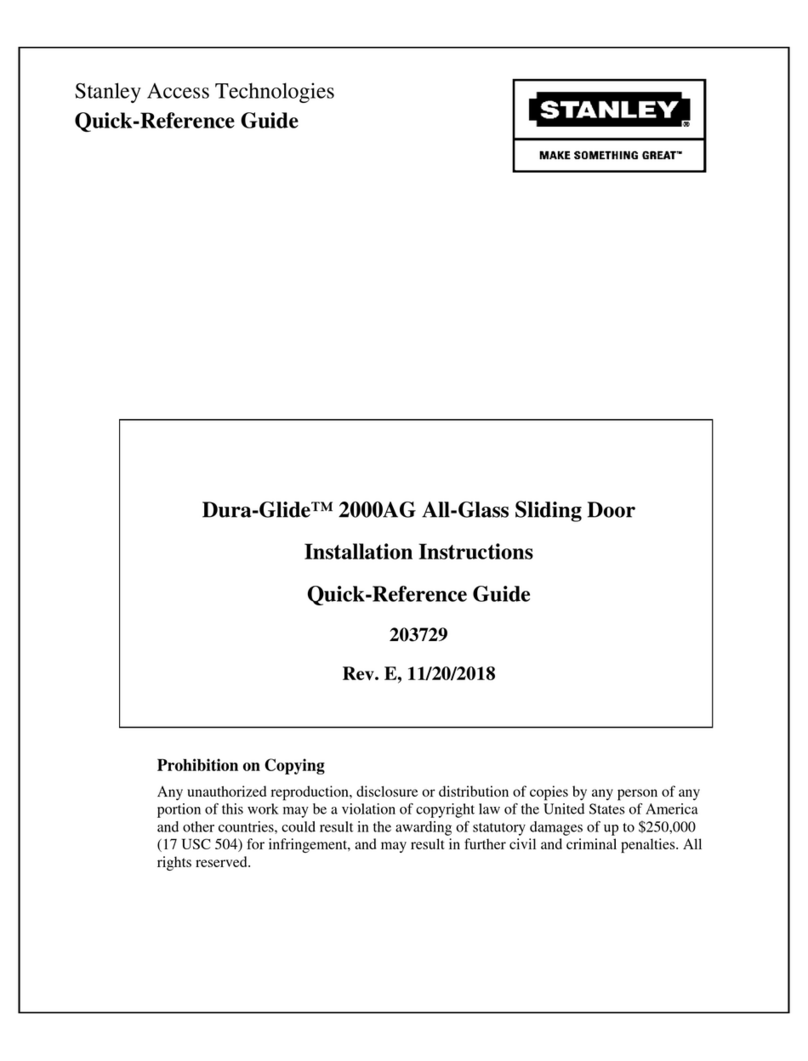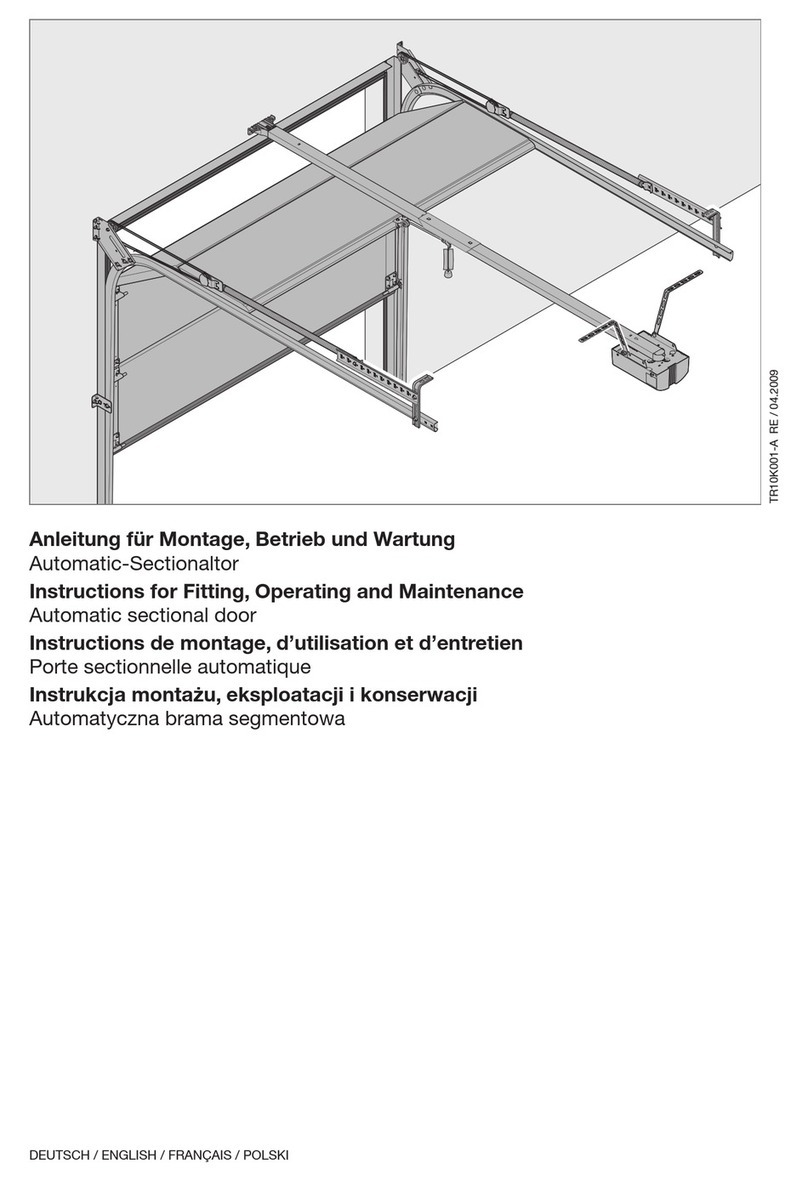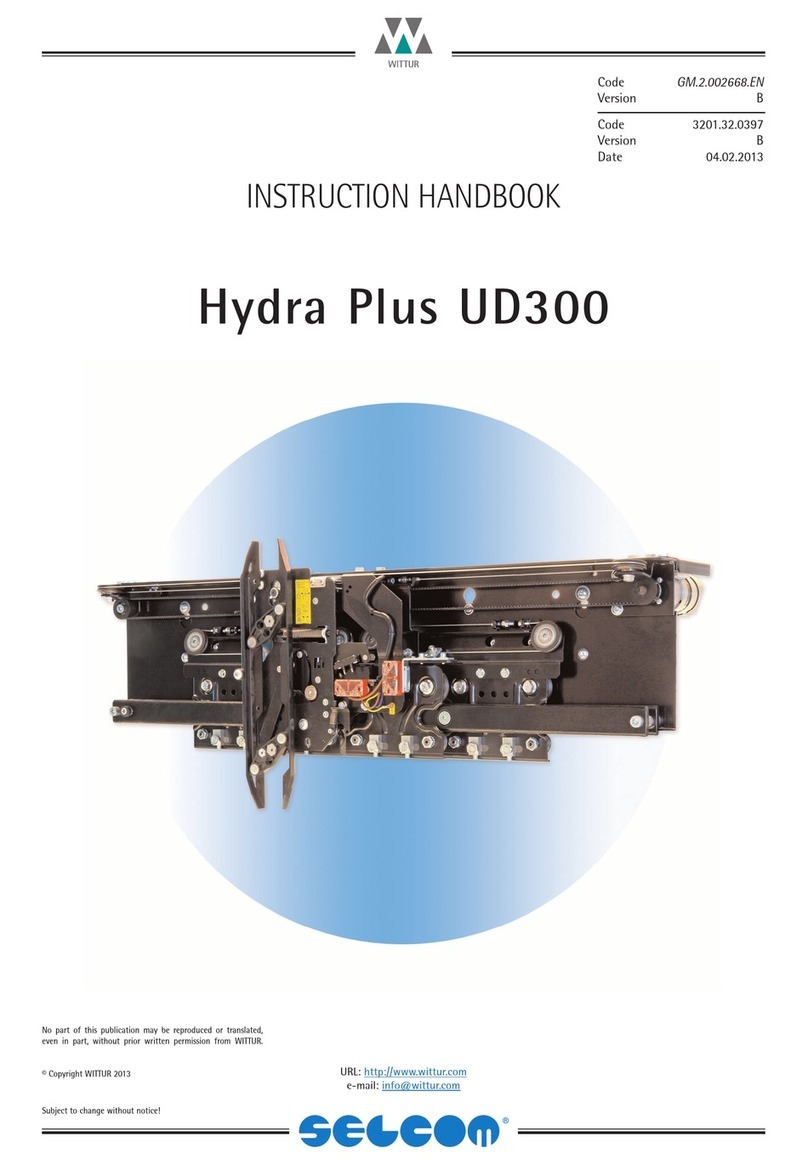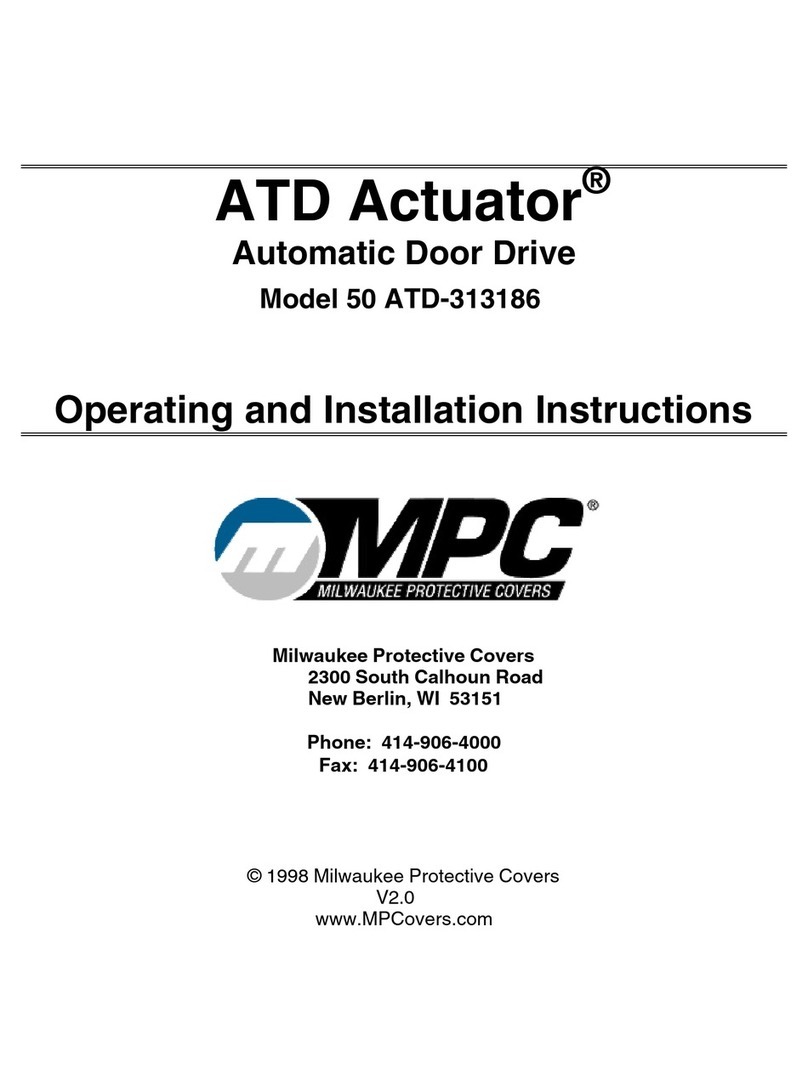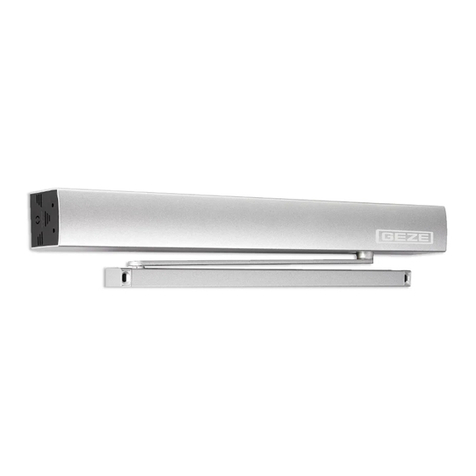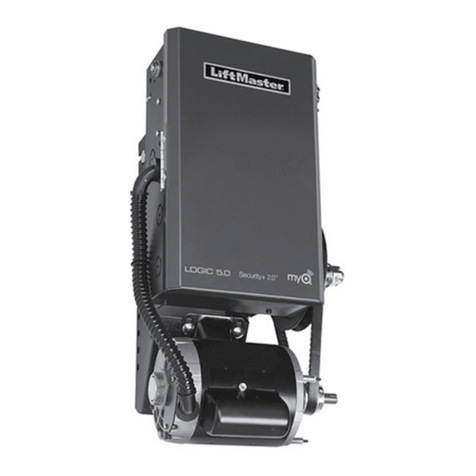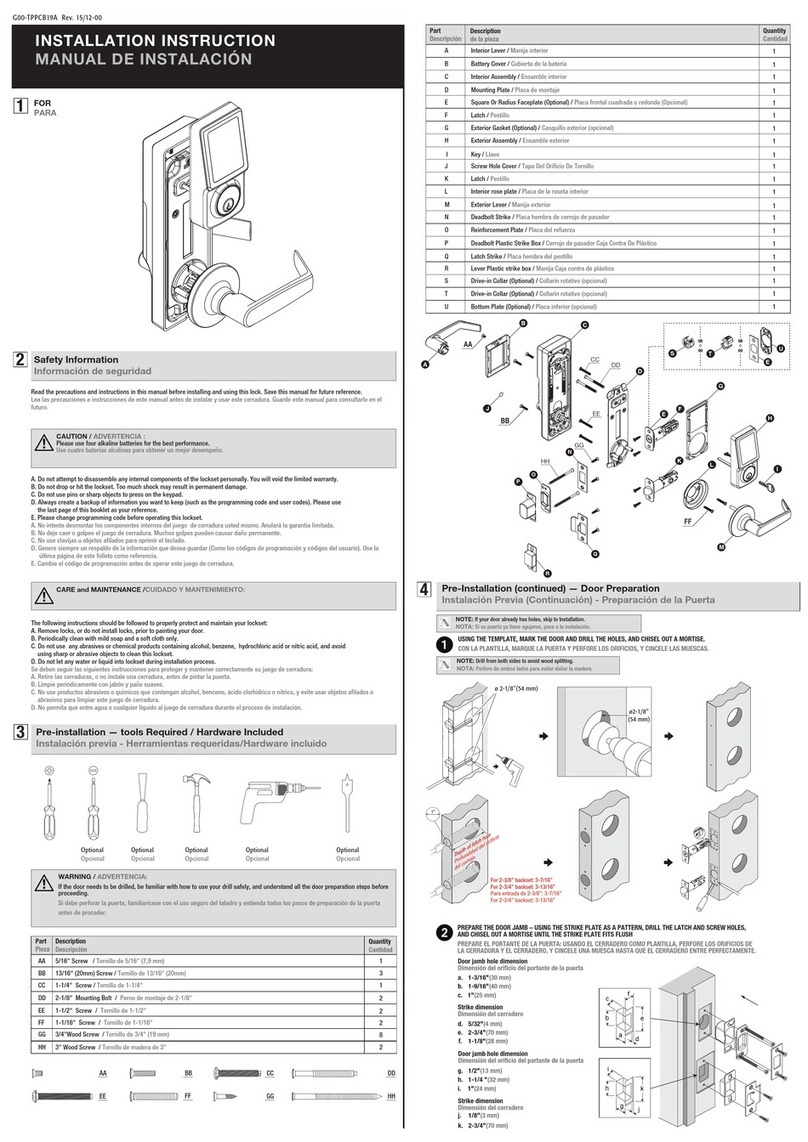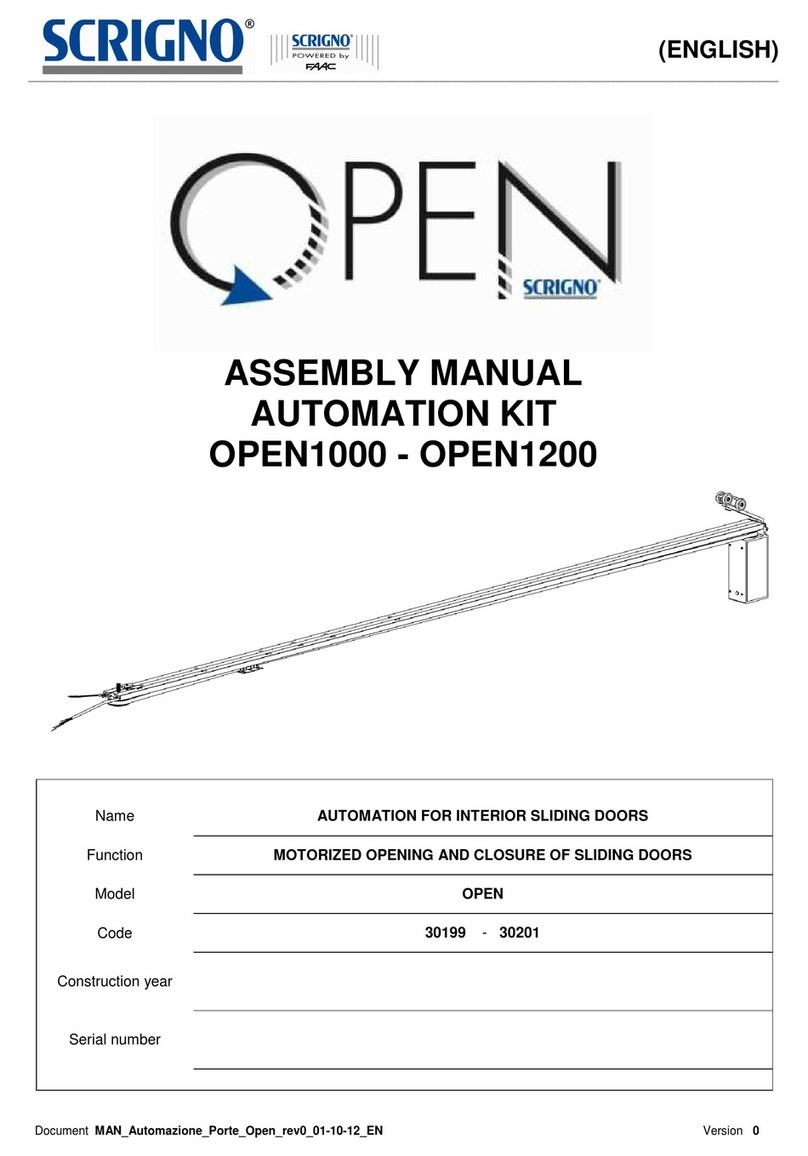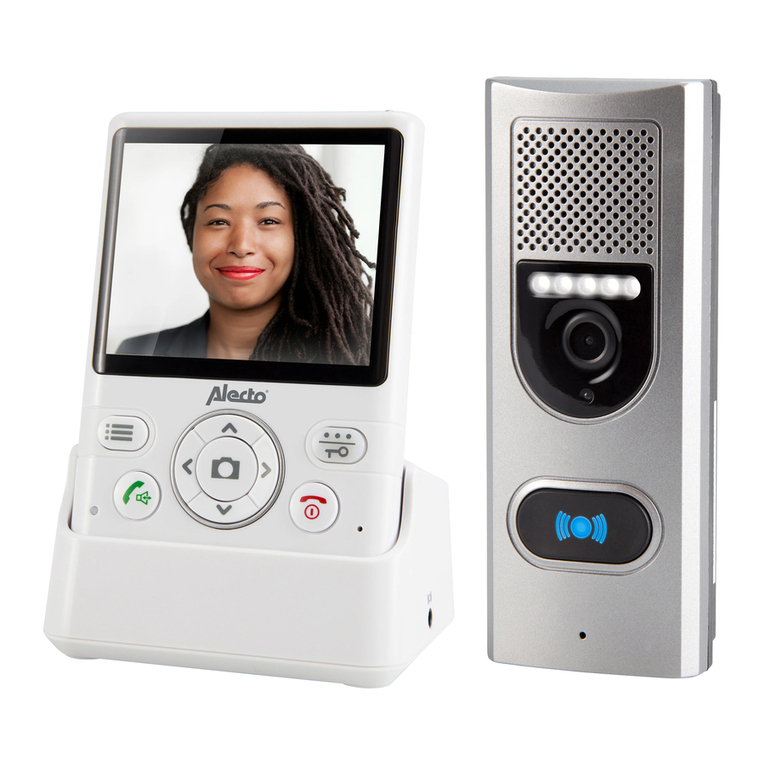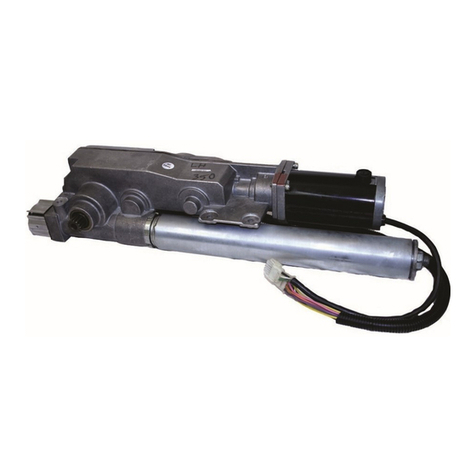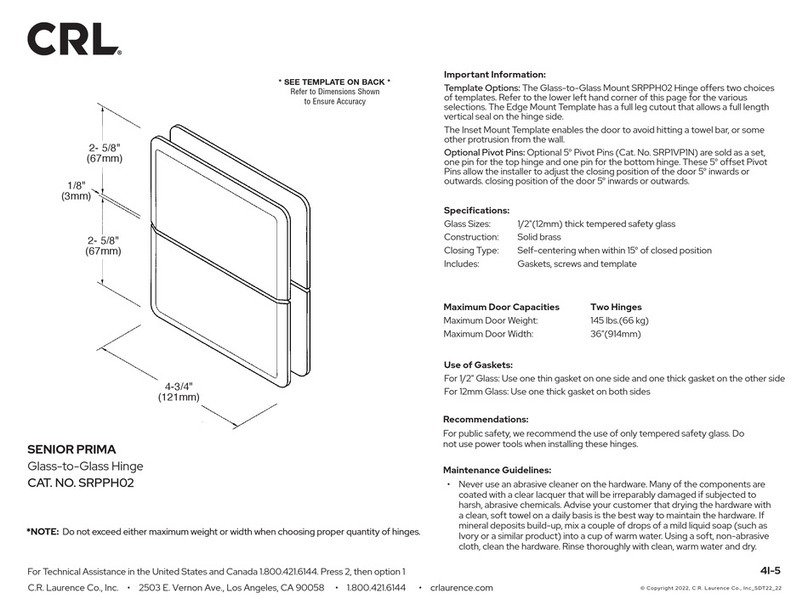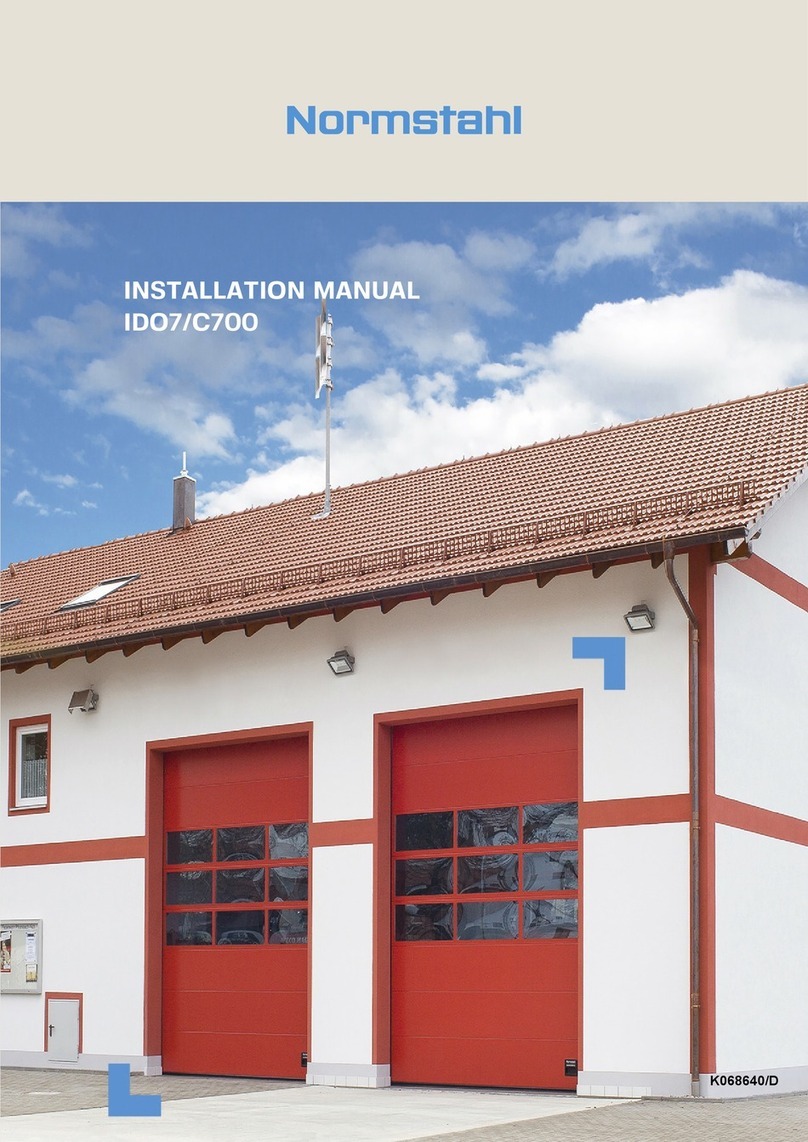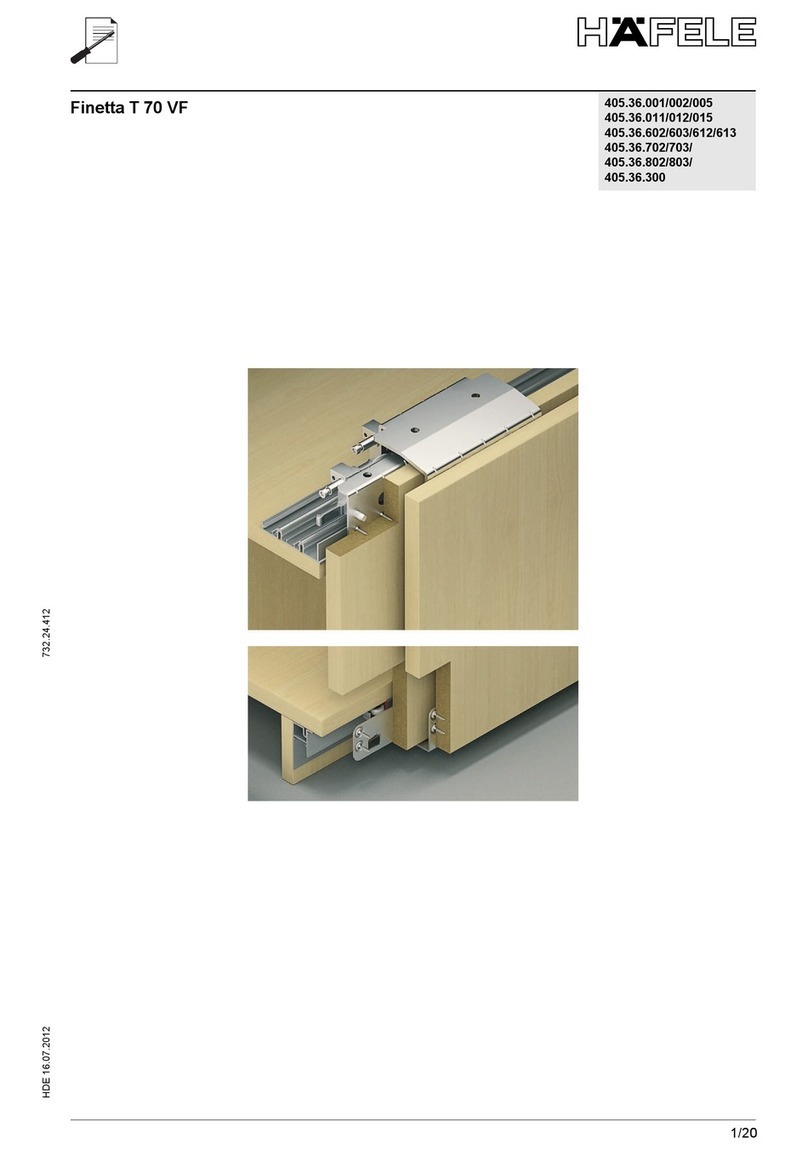
203917 Rev. D
Toll Free: 800 7 ACCESS (1 800 722-2377)
Service: 888-DOOR-444
Operation and Daily Maintenance
The M-Force™ and Magic-Swing™ operators have been equipped with a power and function switch
assembly for customer convenience. The switch assembly is mounted either on the underside of the
header or in some cases, on the door jamb.
The modes of the function switch are:
•
AUTO ON – Allows the door to function automatically
•
OFF – Door remains closed but can be used manually if not locked
•
HOLD OPEN – Allows the door to remain in the full open (hold open) position
•
POWER SWITCH – recommended to only turn off the power switch if the door is being serviced
Magic-Access™ only utilizes a power “on/off” switch.
The M-Force™, Magic-Swing™ and Magic-Access™ operators have been designed with user safety as a
priority. A built-in emergency release feature allows the doors to be manually operated in either direction
in the event of an emergency or power failure. While the door is in the emergency release mode, a
disconnect switch will disable the automatic door system. The doors will not function automatically
unless the panels are closed completely to their normal position.
General housekeeping maintenance should be provided by the owner or responsible person in charge.
Check the door area for tripping or slipping hazards. Check that guide rails are firmly anchored. There
should be no bulletin boards, literature racks, merchandise displays, or other attractions in the door area
where people could possibly be hit by the door.
Inspect the finger guard to see that it is secure and in good repair. Check all door panels for broken or
cracked glass. Glass panels should be made of a safety- type material. Stanley Access Technologies
recommends that you clean the automatic door system using the following procedure:
1.
Glass – Clean with water and a cotton cloth or use Windex™ or other like‐product with a
detergent and alcohol‐based cleaner.
2.
Aluminum – Clean with a mixture of equal parts Windex or other like‐product and Simple
Green™ All Purpose Cleaner and a cotton cloth.
3.
Sensors - Clean the lenses of the sensors with a dampened cloth. Do not spray cleaners directly onlens.
4.
DO NOT USE any product with Alkalide or other sodium‐based product as it could
deteriorate the aluminum finish.
Inspect the door(s) to make sure the decals are properly displayed. See diagrams on pages 7 and 8.
A “Daily Safety Check” of the doors should be completed at a minimum of once a day. Please see the
attached “Daily Safety Check” list for procedures. When performing a “Daily Safety Check”, pay attention to
how your door system works. If you encounter a difference in performance, whether it be mechanical or
sensor issues, discontinue the door operation and call for service.
